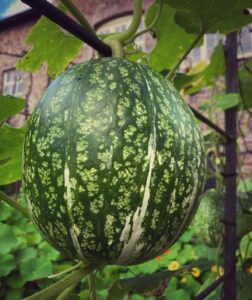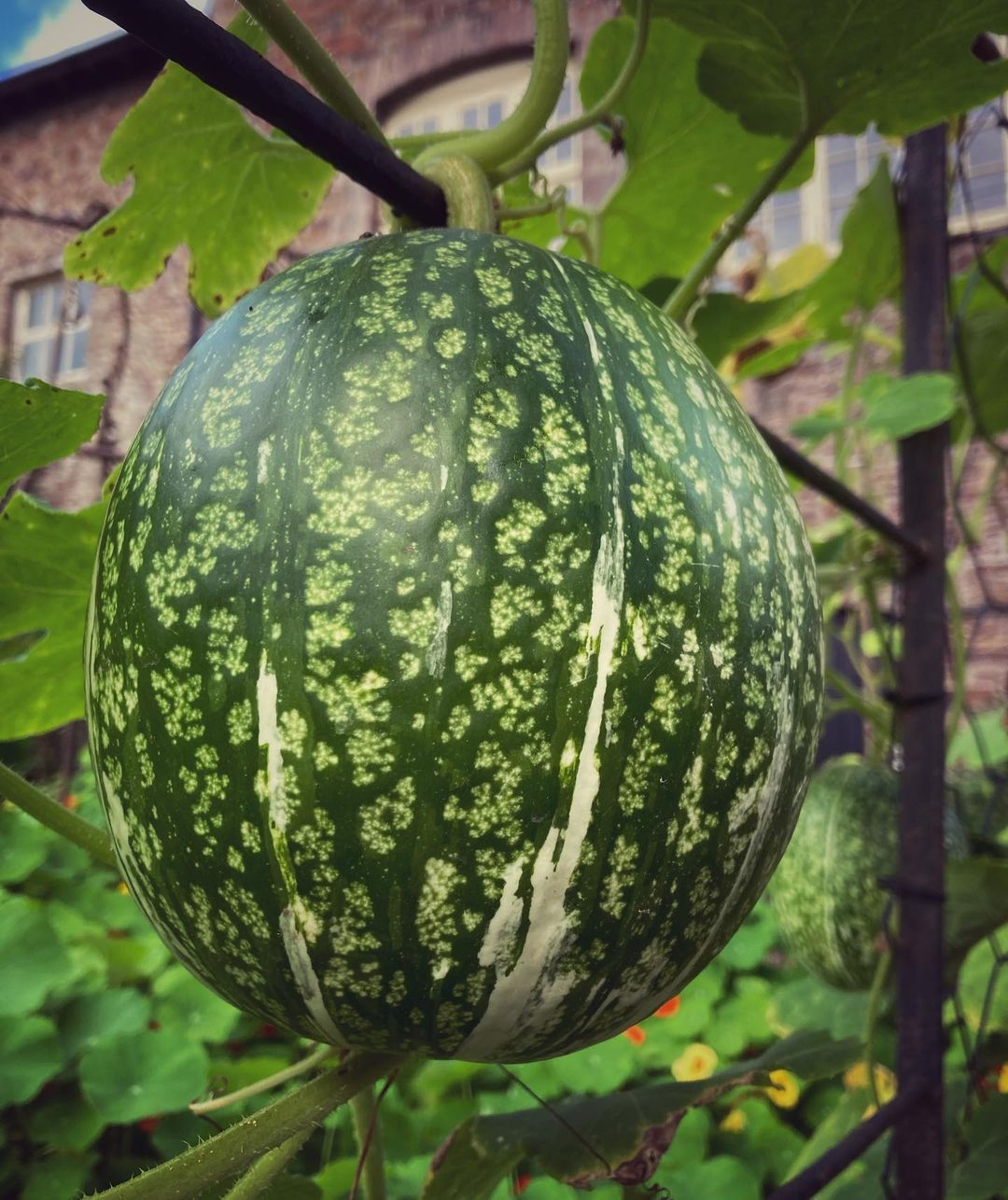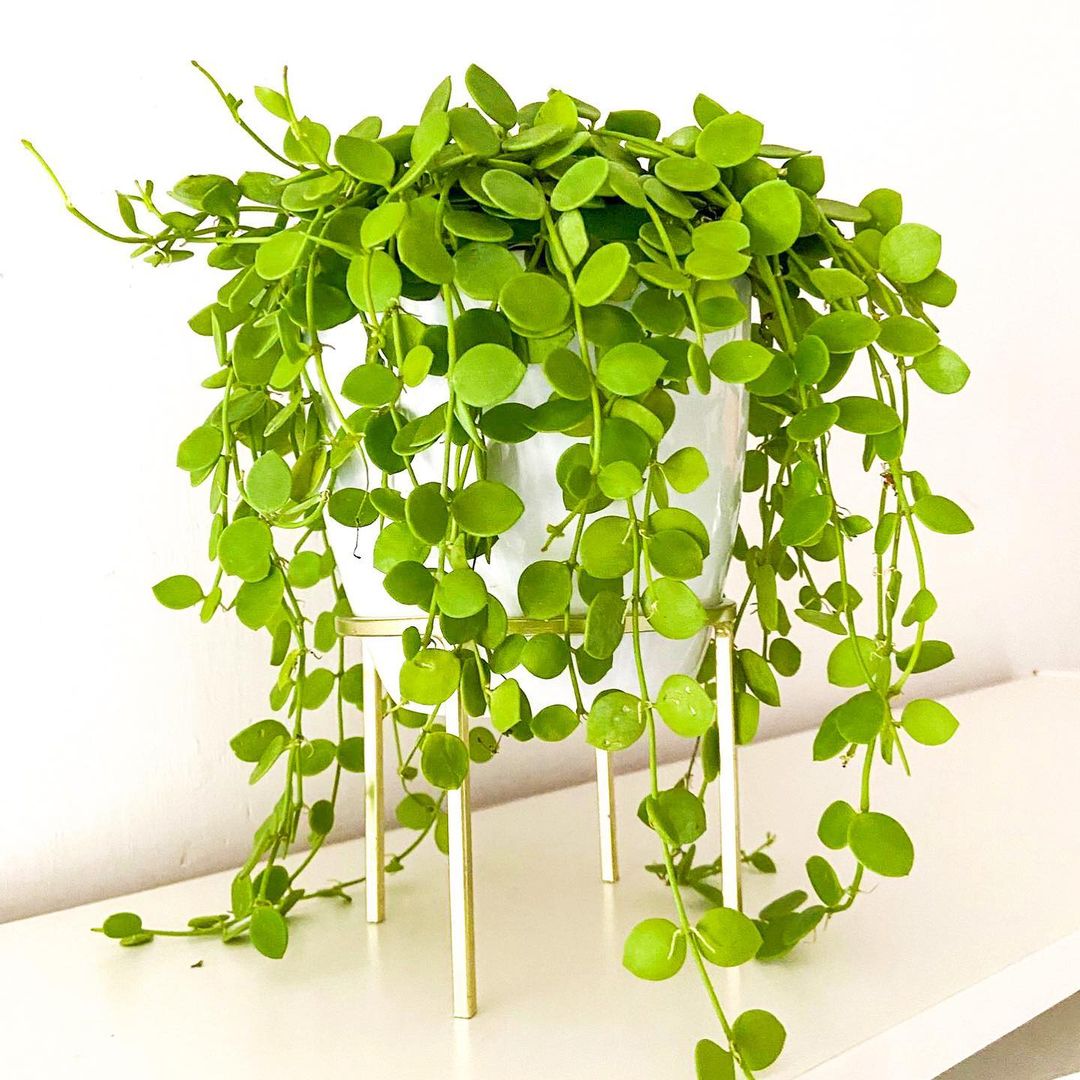Follow this Chilacayote Squash Care guide that will help you from planting to harvesting and storage; we’ve got you covered with everything!
Proper Chilacayote Squash Care helps you in producing healthy, flavorful fruits. Read on to learn everything about How to Grow Fig Leaf Squash in the given post.
Common Names: Asian pumpkin, black seed squash, cidra, fig-leaf gourd, chilacayote, and Malabar gourd
Botanical Name: Cucurbita ficifolia
Check Passiflora Caerulea Growing Guide
What is Chilacayote Squash?

Chilacayote squash (Cucurbita ficifolia) belongs to the Cucurbitaceae family, along with melons, cucumbers, and gourds. It grows on long climbing vines that can reach up to 50 feet in length. This unique squash variety is often mistaken for a spotted watermelon.
The Nahuatl word “Tzilacayotli” gave birth to the name Chilacayote, as well as several other variations of the name throughout Latin America. It also goes by the Seven Year Melon and Malabar gourd. Chilacayote squash is renowned for its excellent storage capabilities; its flesh and seeds are both used in culinary applications.
The Chilacayote squash is oblong and elongated, resembling a watermelon in shape and averaging 8 inches in diameter. It has a rough, dark brown stem. The rind is smooth and firm, ranging from light to dark green, and marked with cream-colored spots and streaks running along the fruit’s length. Young, small Chilacayote squash is entirely edible with a thin and tender skin. However, the rind becomes exceedingly tough and inedible as the squash matures. The flesh is bright white and has a spongy, moist texture, encompassing many flat, black to dark brown seeds. Although each Chilacayote squash has a different number of seeds, some fruits may hold up to five hundred individual seeds. When cooked, Chilacayote squash has a mild and neutral flavor, absorbing the taste of other ingredients with ease.
Propagating Chilacayote Squash
To propagate Chilacayote squash, it’s advisable to plant the seeds directly in well-draining soil that has been lightly tilled. Wait for warm weather before planting the seeds.
- Plant the seeds 1-2 inches deep and spaced 4-6 inches apart.
- Water the seeds gently and regularly until the plants are established.
- After the plants have grown to a height of 6-8 inches, thin them by removing some. So that there is a distance of 12-18 inches between each plant.
Growing Chilacayote Squash in Pots
To grow Chilacayote squash successfully in pots, it needs to be planted in a large pot. Selecting one that is at least 12 inches deep and 20 inches wide will be perfect. It’s essential to ensure that the pot has drainage holes at the bottom.
Check the Silver Dollar Vine Care
Growing Needs of Chilacayote Squash

Sunlight
Chilacayote squash is a tropical vine that flourishes in full sunlight. It requires a minimum of 7-8 hours of direct sunlight per day to grow and develop its large, green-striped squash.
Soil
The soil has to be slightly acidic, with a pH range of 6.0 to 6.5. For Chilacayote squash, it’s advisable to use a growing medium that has a high level of organic matter, such as compost or aged manure. This provides the necessary nutrients for the plant’s growth.
Water
Chilacayote squash does not need excessive watering, but it does require an adequate amount of water for optimal yield. Water the plant deeply but infrequently. Allow the soil to dry out between watering sessions.
Throughout the growing season, water the plant once or twice per week, depending on the climate and soil type. Water at the plant’s base. Avoid getting the leaves wet to prevent the development of fungal diseases.
In the hottest part of summer, it may be necessary to water the Chilacayote squash plant more frequently than usual.
Chilacayote Squash Care
Fertilizer
To ensure healthy and productive Chilacayote squash plants, fertilization is crucial. Apply a balanced liquid fertilizer, such as a 10-10-10 or 5-10-10 blend, during active growth when the plant is producing new leaves, typically when it reaches a height of 6 inches.
Apply the fertilizer around the base of the plant and water it thoroughly. Repeat the application every two to three weeks during the growing season.
Support
To support the growth of Chilacayote squash, a trellis is highly recommended. It offers several benefits, including keeping the fruit off the ground to prevent diseases and pests, improving air circulation, and maximizing garden space.
Constructing a trellis is simple and requires four posts and some netting or twine strung between them. Ensure the posts are firmly rooted in the ground, and the netting or twine is taut. Plant your squash close to the base of the trellis and guide the vines to climb as they develop. Regularly prune the vines and tie them to the trellis as needed.
Pests and Diseases
A soil-borne pathogen causes bacterial wilt. To prevent it, one should practice crop rotation. Avoid planting in wet or poorly drained soil. Use disease-resistant varieties.
Cucumber beetles munch on the foliage and blooms of squash plants. Use row covers to keep the pests away. Additionally, you can handpick the beetles off the plants. Use traps or insecticides as a last resort.
Squash vine borers excavate into squash stems and feed on the inner tissue. To control them, cover the base of the plants with row covers and maintain weed-free surroundings around the plants. Use mulch or plastic to keep the stems cool and dry.
High humidity and poor air circulation are the main causes of powdery mildew. To prevent this fungal disease, prune away any infected or dead leaves. Provide ample space between plants and water at the base of the plant instead of on the leaves.
Squash bugs suck the sap from the foliage of the Chilacayote Squash. To control them, remove any weeds and debris in the area. Handpick the bugs from the plants and use insecticides if nothing works.
Check the Graptosedum ‘Daruma Shu-rei’ Care
Harvesting Chilacayote Squash
To harvest chilacayote squash, gently twist and pull the squash from the vine when it is bright green with a few yellow patches. If it does not come off easily, leave it for a few more days to ripen.
After picking, remove the stem and place the squash in a safe place away from direct sunlight to preserve its flavor.
Properly store the squash in a cool and dry place, where it can last for up to a month.
Chilacayote Squash Nutritional Value And Uses
The unique vitamin found in Chilacayote squash is called vitamin B8 or D-chiro inositol, which diabetics use as a natural antihyperglycaemic or insulin mediator. In addition, the seeds of the squash are also high in protein.
- Chilacayote squash has versatile applications, including both raw and cooked uses such as boiling and baking.
- Immature squash can be cooked like zucchini by slicing and sautéing or stuffing after boiling.
- The flesh can also be cut into spaghetti-like strands or used to make a beverage with pineapple or sweetened milk.
- You can consume seeds by roasting them and enjoy them like peanuts.
- Chilacayote squash pairs well with various ingredients such as leeks, onion, garlic, serrano pepper, mushrooms, millet, quinoa, tomato sauce, gruyere cheese, orange, and lime.
- You can store Mature Chilacayote squash in a cool, dry environment for several years. The fruit will remain fresh and even grow sweeter over time.
- The more tender, young Chilacayotes can be stored for up to two weeks in the refrigerator.


